
Mikhailovsky Castle (or Engineering Castle) - the former Imperial Palace, - the largest monument of architecture, completing the history of St. Petersburg architecture of the 18th century.
Today, Mikhailovsky Castle is part of the architectural complex of the State Russian Museum. Some of the museum's collections are displayed within its walls and temporary (rotating) exhibitions are held.
Mikhailovsky Castle is the only palace structure in Russia in the style of romantic classicism. In addition, the castle combines the features of a medieval knight's castle and a secular European palace.
The castle was built in 1797-1801 by architects V. I. Bazhenov and V. Brenn, by order of Emperor Paul I.
The castle was built on the site of the Summer Palace of the Empress Elizabeth Petrovna, where Paul I spent his childhood years. Elizabeth Petrovna - great-aunt of Paul I. The Summer Palace was dismantled by order of Paul, immediately after the death of his mother - Catherine II. So much of the rapid demolition of the palace and the desire to build a new residence in its place were due to the fact that while still being the heir, Pavel, like, in principle, all the Romanovs, dreamed of building his own residence and even then made sketches for the project of the palace.
On November 8, 1800, the day of St. Michael the Archangel, the castle was solemnly consecrated, but work on its interior decoration continued until March 1801.
In the castle there was a temple of Michael the Archangel, the patron saint of the House of Romanov, in connection with which the castle-residence got its name - "Mikhailovsky". The name was also promoted by the desire of Paul I, who took the title of Grand Master of the Order of Malta, to call all his palaces "castles".
Paul I lived in the new residence for only 40 days, as he was killed by the conspirators in his bedchamber in the Mikhailovsky Castle on the night of March 11-12, 1801.
Soon after the tragic event, art treasures were removed from the castle, and its state rooms were adapted for various departmental institutions and distributed as residential apartments.
In 1822, the former imperial residence housed the Main Engineering School, which gave the palace a new (second) name - "Engineering Castle". Among the students of the school was F. M. Dostoevsky.
Over the course of two centuries, when the castle housed military educational institutions and various Soviet institutions, changes were repeatedly made to the layout of the former imperial residence.
In 1991, Mikhailovsky Castle became part of the State Russian Museum complex, which it is still today.
The unique appearance of the castle-residence, combining contradictory architectural trends and stylistic techniques, is now perceived as the most expressive symbol of the Pavlovian era. At first glance, it seems that there is something strange in the appearance of the palace-castle, at least, this former imperial residence clearly does not fit into the general ensemble of other palaces in St. Petersburg. And, meanwhile, in the appearance of the castle, the artistic tastes and originality of the personality of the owner and the main creator of the castle - Paul I-were clearly embodied.
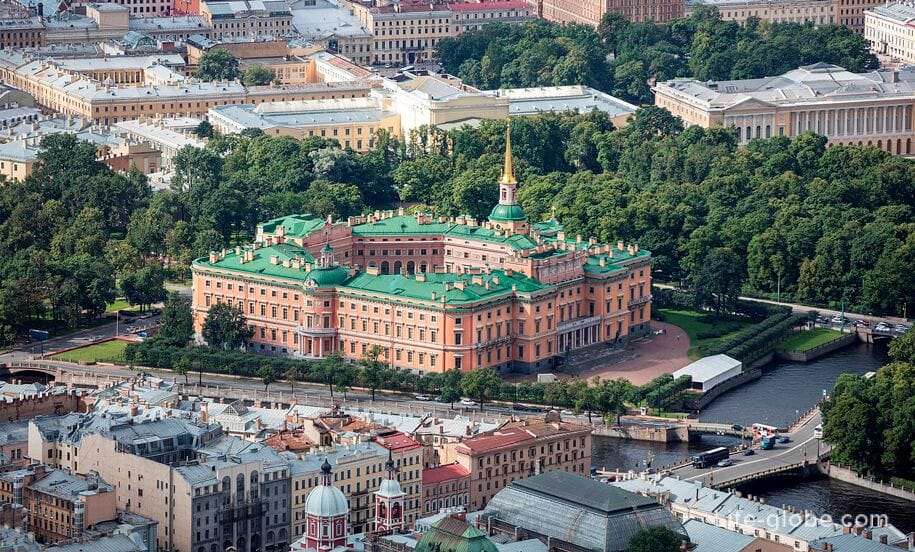
The main facade of the Mikhailovsky Castle (south) is distinguished by its special solemnity and monumentality.
The facade has the main portal (entrance) - the Resurrection Gate, decorated with high granite obelisks with military armor and gilded monograms of Paul I. The raised portico has 4 Ionic columns. In the tympanum of the pediment is a bas-relief "History puts the glory of Russia on its tablets", made by the Staggi brothers. On the frieze under the pediment there is an inscription - "The Holy Place of the Lord is fitting for Your house in the length of days", which is a modified final line of the 92nd Biblical psalm.
The upper central part of the southern facade of the castle is crowned with a simple attic.
The southern entrance is now the entrance to the Russian Museum.


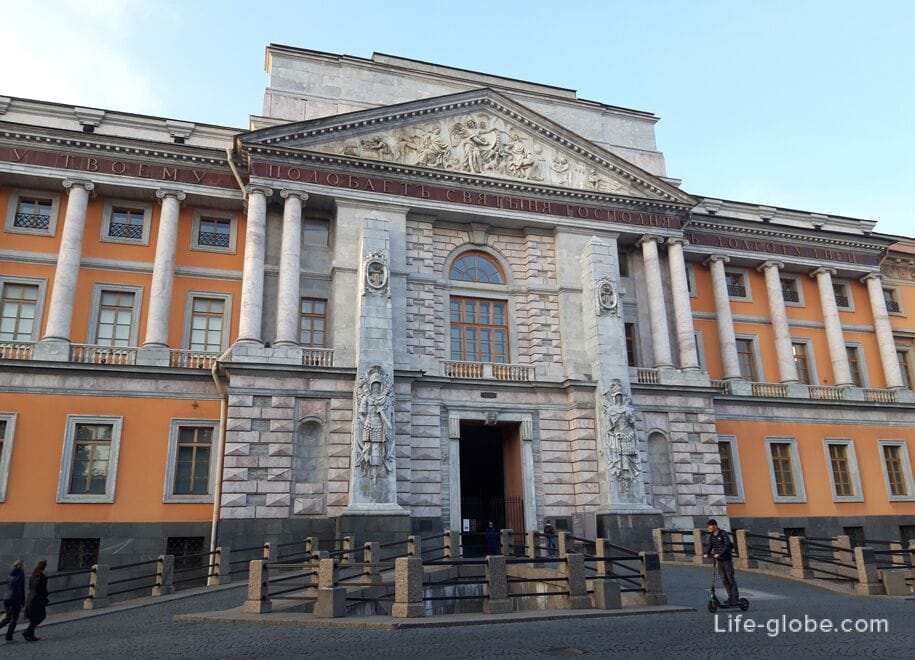
Opposite to the main one-the northern facade of the castle, facing the Summer Garden, is designed as a park.
The center of the facade is decorated with a balcony at the level of the second floor, which is supported by paired marble columns of the Tuscan order and which is reached by a wide gentle staircase on both sides decorated with statues of Hercules and Flora.
The north facade is crowned with a richly decorated attic.


The western-church facade of the castle looks especially elegant.
The apse of the temple (palace church) stands out for the general outline of the castle walls, and the high bell tower can be seen from afar.
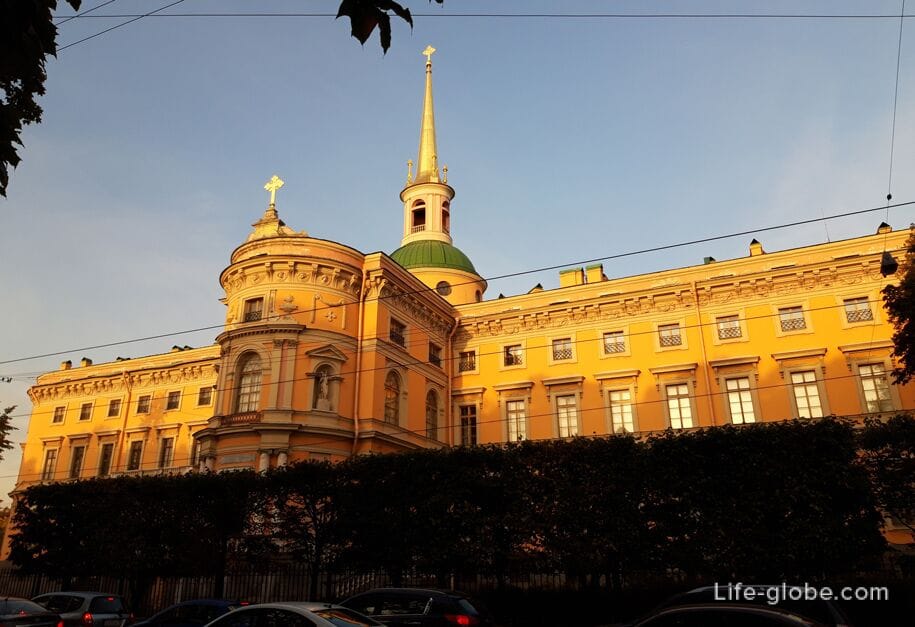
The eastern facade of the castle, facing the Fontanka River, is similar to the western one and has a small semicircular projection in the center, ending in a dome and a tower with a flagpole, on which the imperial standard fluttered during the stay of Paul I.

The center of the ensemble of the Mikhailovsky Castle is the octagonal front courtyard, in which there is a monument to Paul I, installed in 2003 (the work of the sculptor V. E. Gorev and the architect V. I. Nalyvayko).
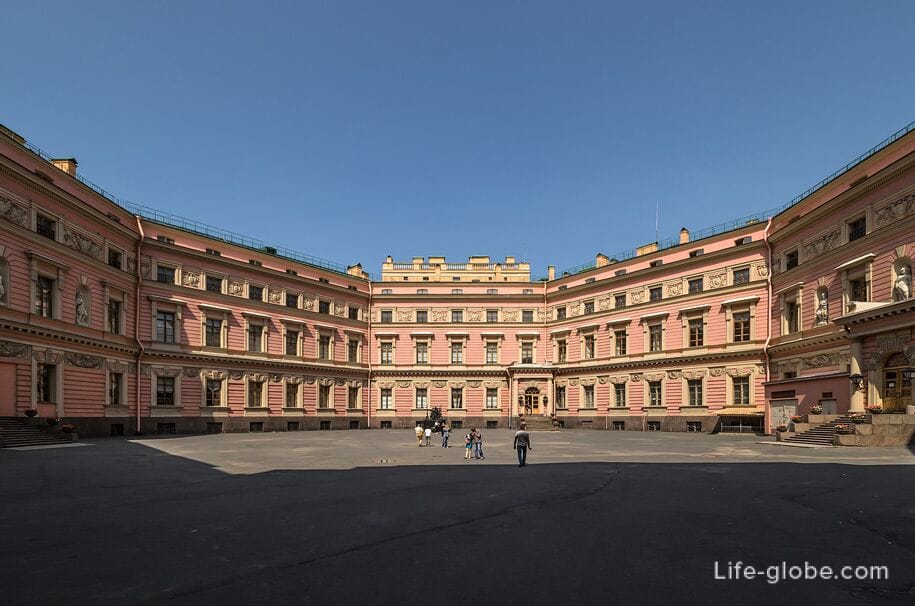
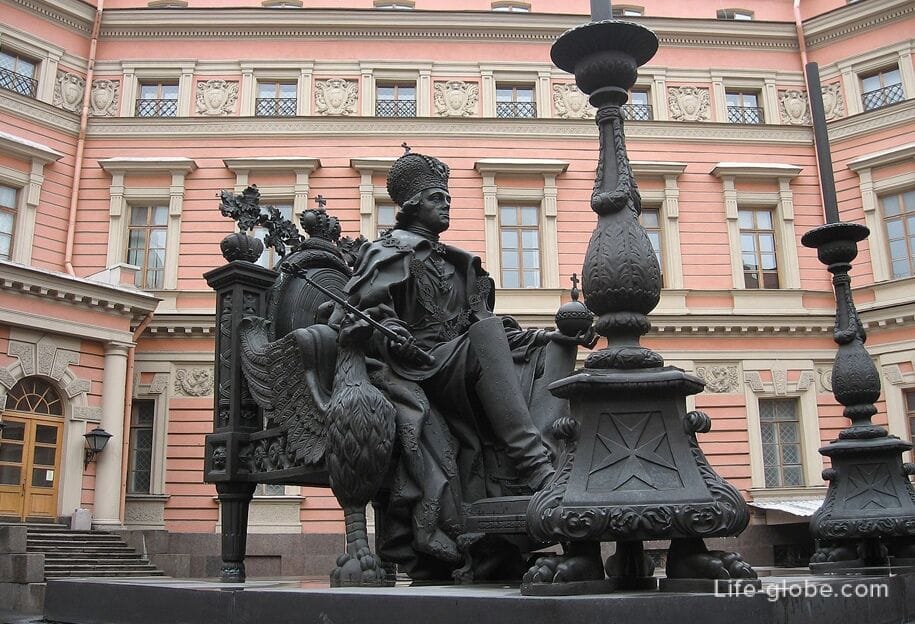
Russian Russian Museum-the world's largest museum of Russian art, whose collections are located in several historical buildings, together representing a unique architectural and artistic complex in the historical center of St. Petersburg. Learn more about the Russian Museum...
In the walls of the Mikhailovsky Castle, you can see some of the restored rooms and halls of the imperial residence. The museum's collections are also on display, including a portrait gallery, works of Russian art from the first half of the 19th century, and sculpture from the late 19th and early 20th centuries.
The main exhibition of the museum in the Mikhailovsky Castle is dedicated to the royal family and the Romanov dynasty emperors.
Grand staircase of the castle
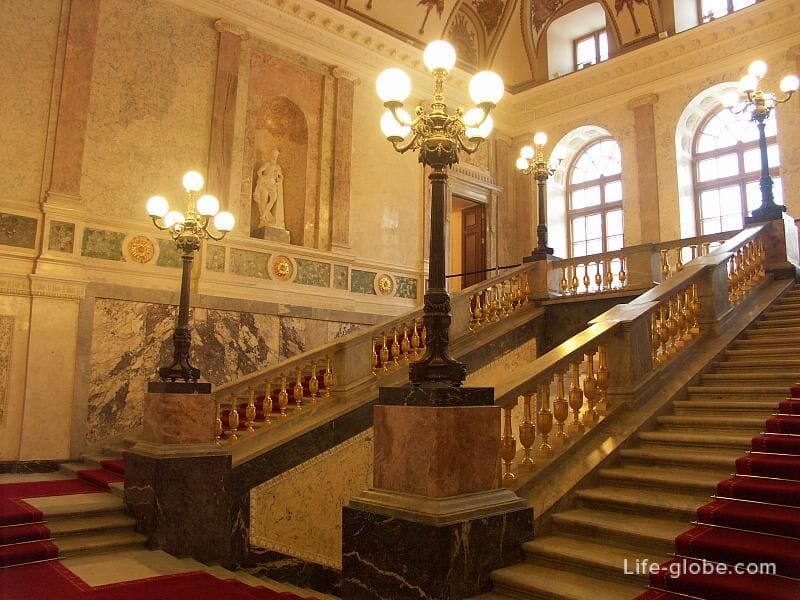
Marble Gallery (St. George's Hall) it served as a guardhouse for the Knights of the Order of Malta. During the history of the hall was rebuilt and its original appearance has not been preserved

Gallery of Antiques of the Empress Maria Feodorovna

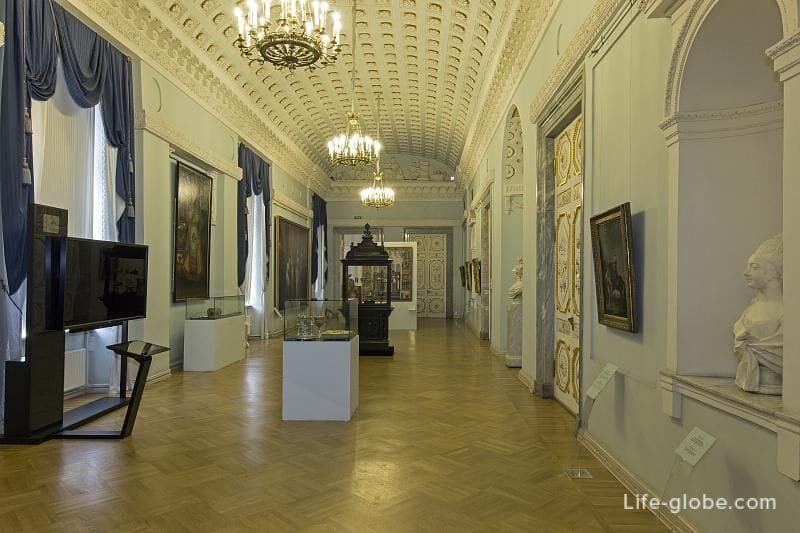
Raphael Gallery
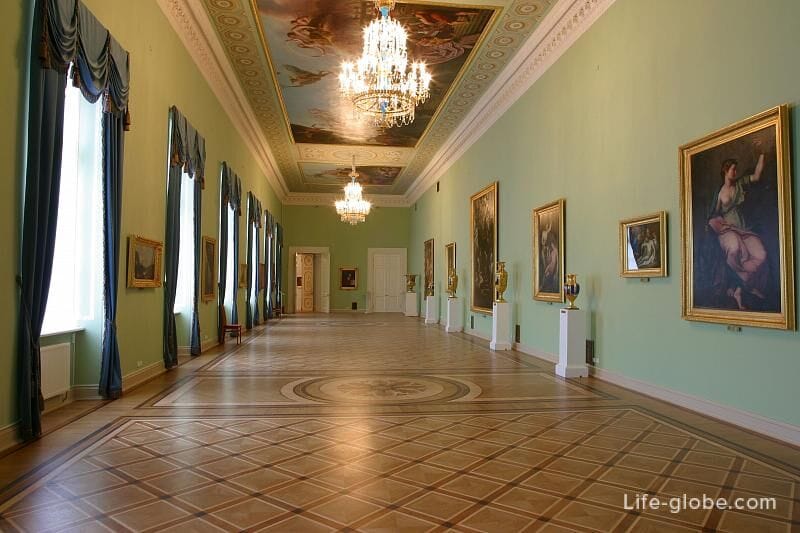
Oval Hall (Rotunda) - a room intended for a solemn meeting of the Knights of the Order of Malta
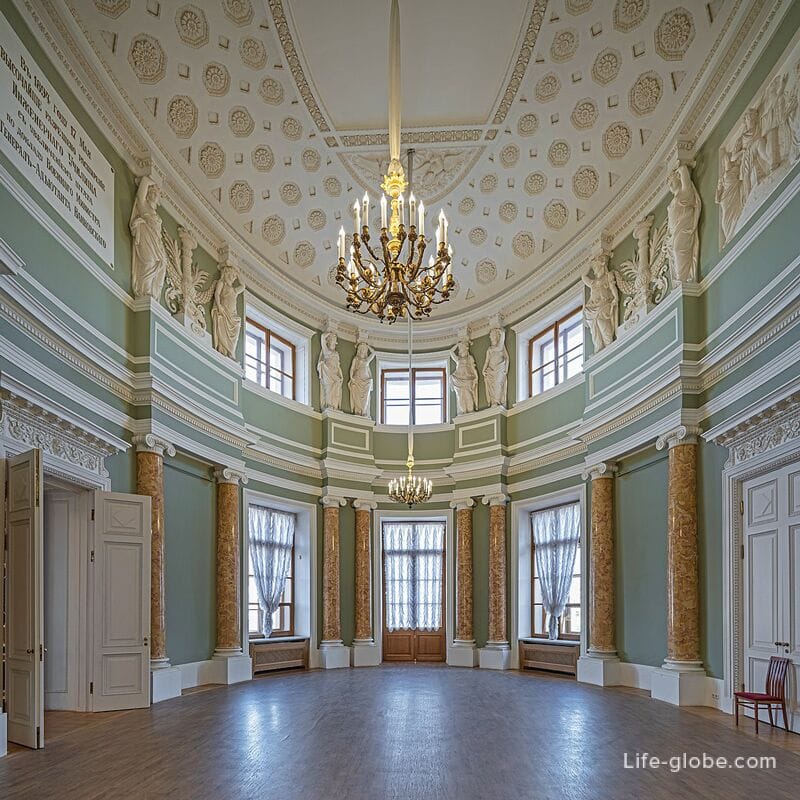
The bedchamber of Maria Feodorovna

The throne room of Maria Feodorovna - the room in which the throne was located.
The walls of the hall were covered with crimson velvet. In the center of the ceiling, surrounded by partially gilded and painted stucco, was a plafond "The Court of Paris" by the artist Ya. Mettenleiter, who celebrated the beauty of the lady of the castle in an allegorical form.
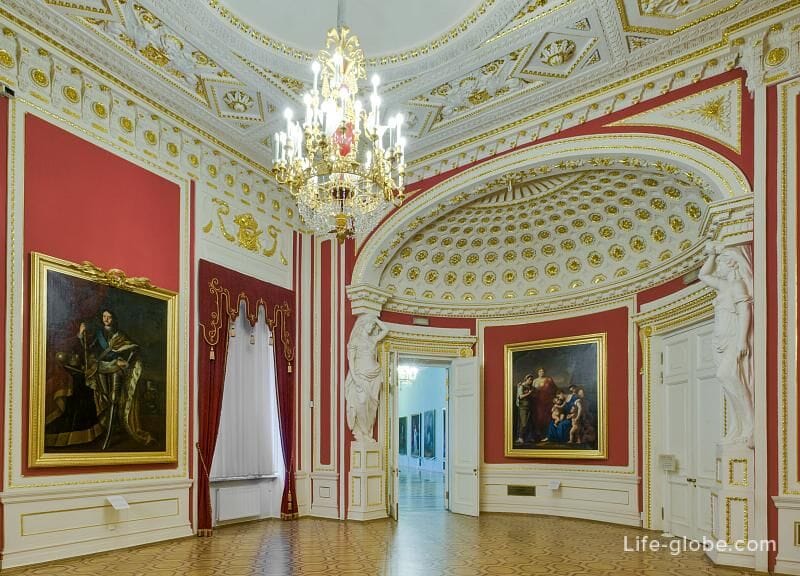
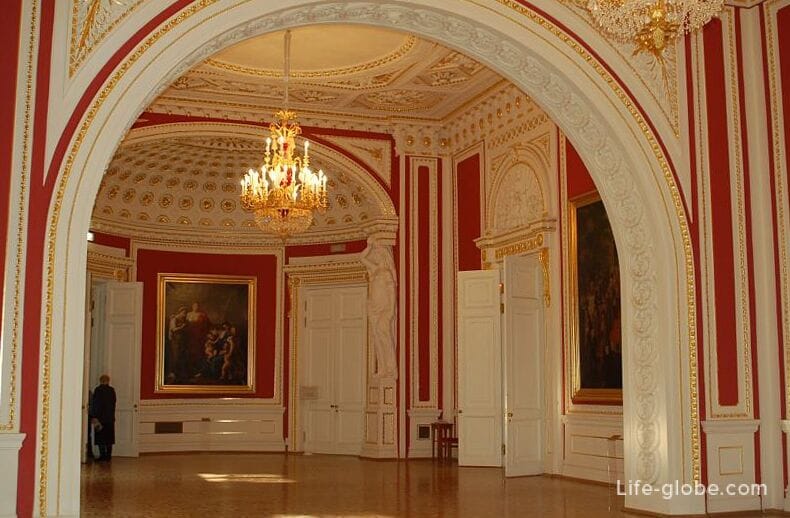
The Church of the Archangel Michael is open to the public in St. Michael's Castle, except for the time of church services.
The museum also holds temporary (rotating) exhibitions.
The majestic bulk of the "palace of St. Michael", as the castle was called in documents of the 18th century, towered on an island bounded from the north and east by the waters of the Moika and Fontanka rivers.
On the western and southern sides, the island was washed by two specially dug channels - the Resurrection and the Church. The system of castle fortifications surrounding the palace and the Constable Square in front of it included canals, half-bastions, drawbridges, and cannons.
In the 1800s, the area around the castle was redeveloped: the drawbridges were removed, and the canals were filled in.
The Resurrection Canal was located near the main (southern) facade of the castle and today in this place there is a single-span Three-part bridge, under which there is a small restored part of the Resurrection Canal.
The bridge connected Mikhailovsky Castle with gornverk and with Zamkovaya Street.
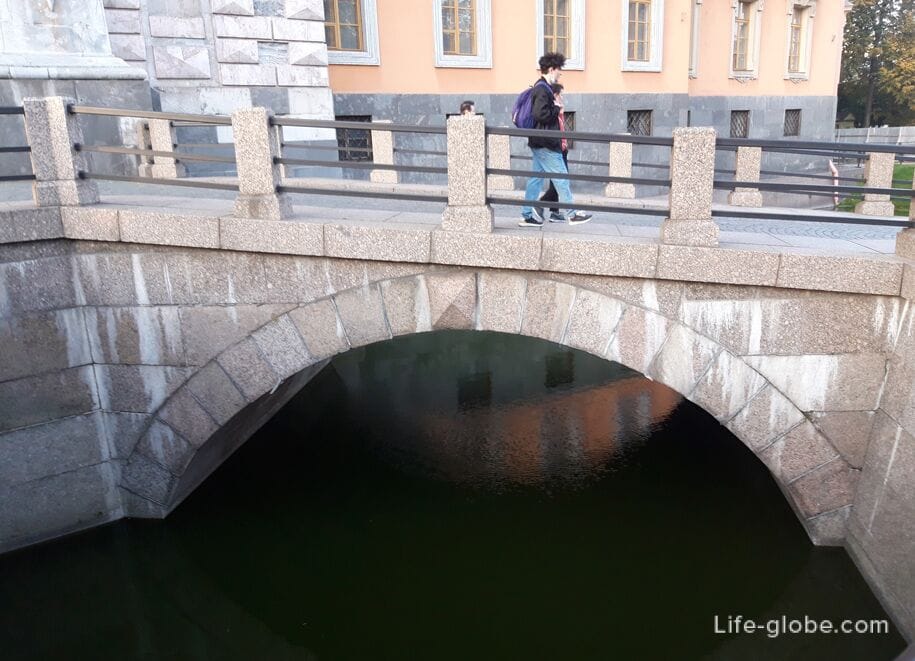
Maple Street leads to the southern facade of the castle. There is an Engineering Square and a bronze equestrian monument to Peter the Great.
Previously, it was the grandiose square of the Constable (from the French connetable - commander-in-chief of the army). Read more about the monument to Peter at the Mikhailovsky Castle...
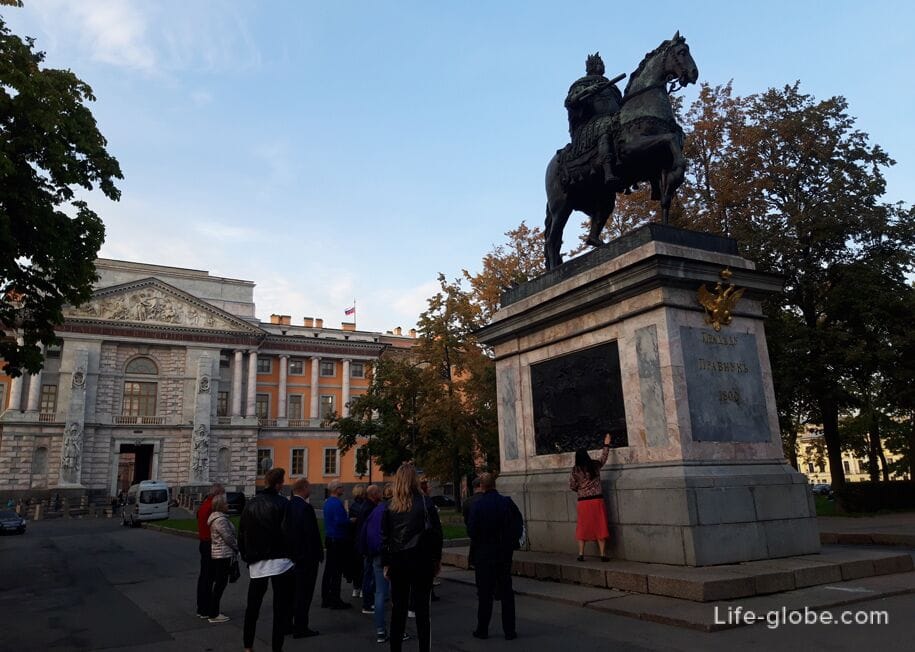
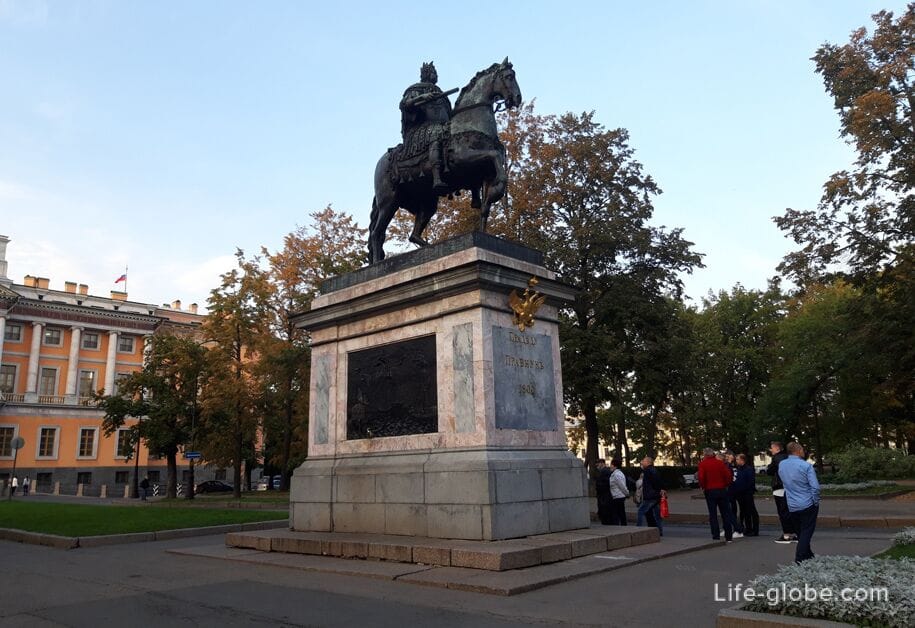
Where Maple and Engineering Streets meet, there are two three-story buildings of the palace type-the pavilions of the Mikhailovsky Castle.
The pavilions served as a link between the castle and the urban development.
The construction of the pavilions was completed by 1800, and they served as the residence of the state ladies and ladies-in-waiting of the Highest Court.
After the death of the emperor, the pavilions house the apartments of the Palace Department and various services.
Today, the pavilions belong to the Russian Museum. In the Eastern Pavilion (Engineering Street, 10) there is a department of the museum - "Russian Center for Museum Pedagogy and Children's Creativity". Russian Russian Museum Multimedia Center is located in the West (Engineering Street, 8), the multimedia exhibition "Our Romantic Emperor" is open, and online lectures of the Russian Museum are held.
The lower floors of the pavilions are decorated with bas-reliefs on the subjects of ancient myths about the wanderings of Dionysus (sculptor F. G. Gordeev).
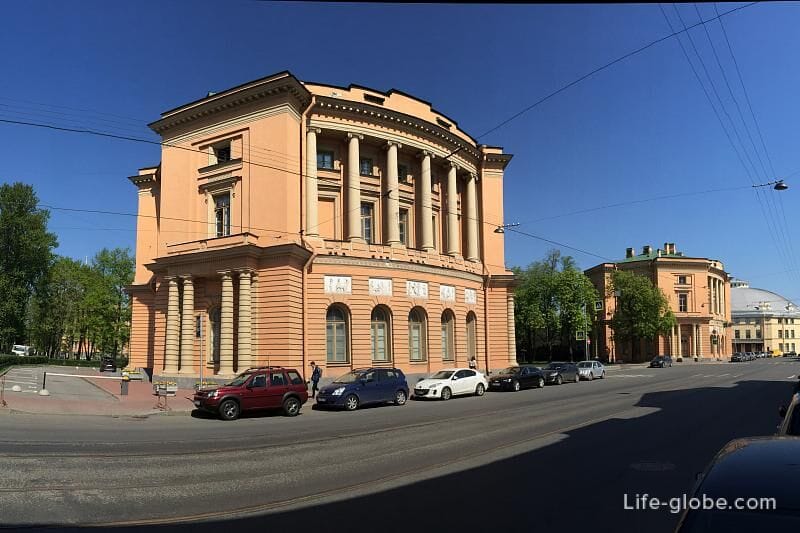
Near the Mikhailovsky Castle, on its western side (across Sadovaya Street), there are the Mikhailovsky Garden and the Mikhailovsky Palace, which are also part of the Russian Museum. Learn more about Mikhailovsky Garden... Learn more about the Mikhailovsky Palace...
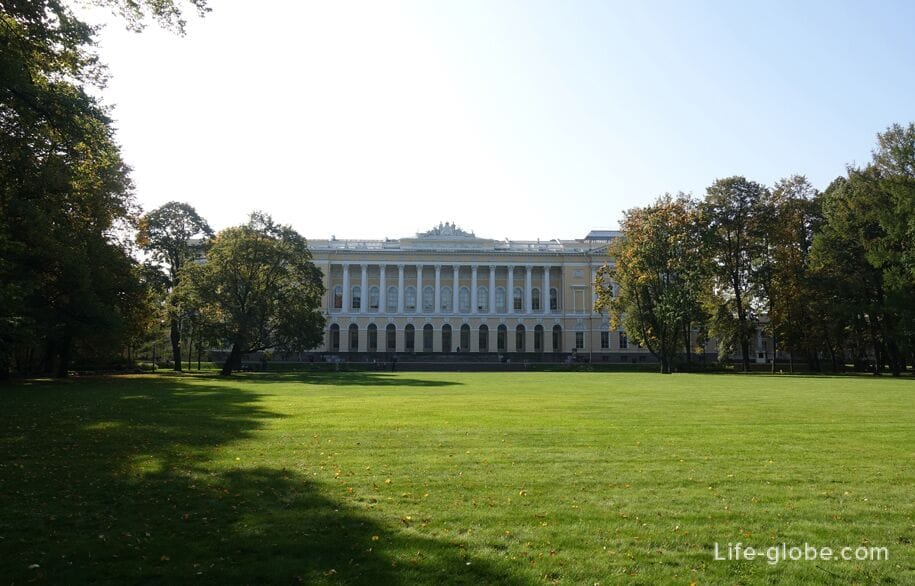
Mikhailovsky Castle is located in the center of St. Petersburg, at the address: Sadovaya Street, 2.
The nearest metrostations are Gostiny Dvor and Nevsky Prospekt.
You can visit the museum in Mikhailovsky Castle by purchasing a separate ticket (only to the castle) or a complex ticket and use it to visit Mikhailovsky Castle + other objects of the Russian Museum.
The information desks of the museum in the Mikhailovsky Castle, Mikhailovsky Palace and the Benois Building provide information about the museum's working hours, temporary exhibitions, events, lectures, classes and concerts held in the Russian Museum.
We recommend that you check all the necessary information, including the museum's working hours, ticket prices, exhibitions and events, before visiting the official website of the museum.
Website of the State Russian Museum: rusmuseum.
You can also see and(or) visit the Mikhailovsky Castle with one of the excursions in St. Petersburg
All accommodation facilities in St. Petersburg, including in the city center and more remote from it, can be viewed and booked here